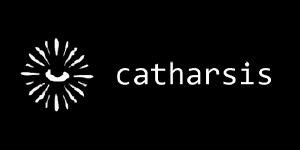Last Updated on September 21, 2025 by DarkNet
After the Seizure Banner: What Community Splinters Reveal
A seizure of a community banner—whether literal or symbolic—can trigger rapid fragmentation within a group. Beyond the immediate conflict, the patterns of splintering that follow offer insights into underlying structures, relationships, and vulnerabilities. This article examines what those splinters reveal, how they form, and what they imply for recovery and resilience.
Context and immediate effects
When a visible symbol of communal identity is seized or contested, responses typically unfold across social, organizational, and practical dimensions. Reactions may include public demonstrations, withdrawal of participation by members, competing claims to legitimacy, and the rapid formation of new subgroups. These immediate effects create observable data points that help analysts and participants understand deeper dynamics.
Common causes of splintering
- Preexisting fault lines: Longstanding disagreements over values, direction, or resource allocation make communities more susceptible to division when a triggering event occurs.
- Leadership disputes: Competing leaders or unclear succession norms can convert a single incident into a broader power struggle.
- Communication breakdowns: Lack of transparent information or inclusive deliberation amplifies mistrust and encourages factional organizing.
- External pressure and incentives: Intervention by outside groups, legal actions, or media attention can harden positions and create incentives for splintering.
- Resource competition: Scarcity or unequal access to funding, venues, or symbolic capital accelerates the creation of rival groups.
What splinters reveal about a community
- Governance and decision-making norms: The speed and nature of fragmentation highlight whether processes are perceived as fair, inclusive, and legitimate.
- Value hierarchies: Which issues break alliances shows what members prioritize—identity, ideology, practical outcomes, or leadership style.
- Network resilience: Patterns of who leaves, who stays, and who forms new groups indicate the strength of interpersonal ties and connective infrastructure.
- Information flows: The role of rumors, official statements, and social platforms in the split exposes the community’s communication channels and vulnerabilities.
- External dependencies: Reliance on outside institutions or funding becomes visible when those ties influence alignments during the split.
Analytical patterns to watch
Observers and practitioners should look for recurring patterns that signal deeper problems or opportunities for repair:
- Whether splits are ideological or opportunistic — ideological splits tend to be more durable.
- Whether new groups form around personalities or explicit programmatic differences — personality-driven schisms often hinder constructive collaboration.
- The degree of cross-cutting ties retained after the split — preserved ties indicate potential for reconciliation.
- How public narratives are shaped — control of the public story affects recruitment, legitimacy, and the prospect of mediation.
Implications for recovery and policy
Understanding what splinters reveal matters for both grassroots recovery efforts and institutional responses. Effective recovery hinges on addressing root causes rather than symptoms.
- Rebuilding legitimacy: Transparent, participatory processes help restore trust in governance and reduce incentives for further fragmentation.
- Mediation and neutral facilitation: Third-party mediators can be useful where internal mechanisms are compromised, provided they are perceived as impartial.
- Protecting pluralism: Policies that support multiple channels for representation and resource access reduce zero-sum competition.
- Monitoring and early warning: Tracking indicators such as membership flows, communication breakdowns, and resource disputes enables proactive interventions.
Practical steps for communities
Groups facing fragmentation after a contested seizure can take pragmatic steps to stabilize and rebuild:
- Establish immediate communication protocols to share accurate information and reduce rumor-driven escalation.
- Convene inclusive forums to surface grievances and agree on short-term rules that prevent unilateral appropriation of symbols or assets.
- Use neutral facilitation to explore pathways for coexistence, shared governance, or orderly separation when necessary.
- Create transparent mechanisms for resource distribution and decision-making to reduce incentives for factionalism.
- Document processes and decisions to improve accountability and enable learning for future disputes.
Conclusion
Splintering after the seizure of a communal symbol is rarely merely about that object; it exposes latent fissures in governance, values, networks, and external relations. Careful analysis of how and why groups fragment provides a roadmap for targeted interventions that prioritize legitimacy, communication, and structural resilience. Addressing these underlying issues increases the chance that communities can recover in ways that are sustainable and pluralistic.













